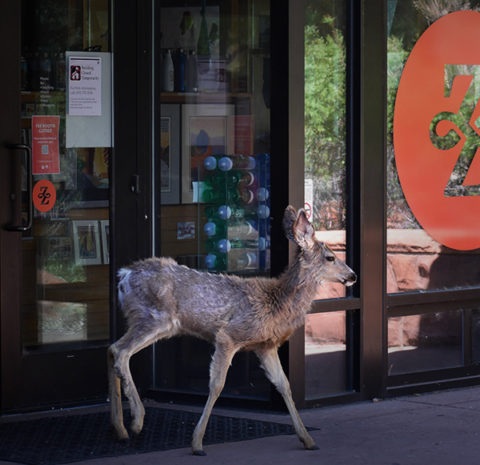Zion Takes a Break
With Gates Closed, Zion Had a Unique Moment to Breathe
While we’ve all been preoccupied with lockdown and staying safe, as we should have been, an interesting phenomenon has occurred on our public lands. Actually, on the entire planet as a whole. We are being told the global pandemic has changed our society, possibly forever. It doesn’t seem at all unreasonable to think that’s true.
 Cities showed dramatic improvements in air quality as people parked their cars and hunkered down at home. Public transportation was severely limited further cutting carbon emissions. Scheduled commercial flights saw an 80% cancellation rate by April. This translates into tons of hydrocarbons not being emptied into the upper atmosphere.
Cities showed dramatic improvements in air quality as people parked their cars and hunkered down at home. Public transportation was severely limited further cutting carbon emissions. Scheduled commercial flights saw an 80% cancellation rate by April. This translates into tons of hydrocarbons not being emptied into the upper atmosphere.
Closer to home, Zion closed the Canyon Scenic Drive in early April for approximately six weeks. This is
the first time in many decades there haven’t been a large amount of people and vehicles in the park. What
that means is the ecosystem had a chance to catch its breath and heal.
The few remaining work crews reported cougar tracks along the Sand Bench Trail… long time no see.
There was more quiet throughout the day, accompanied by noticeably cleaner air. For a brief moment
during those six weeks, we saw a glimpse of what Zion Canyon was before humans arrived close to 9,000
years ago.
My colleague at Joshua Tree National Park sent me their press release that was distributed when they
reopened. They made a point of explaining to visitors that in the short time their park was closed, the
animals had let their guard down in relation to vehicles and crossing the roads. There was an uptick of
animal deaths due to distracted drivers. The park wanted visitors to exercise extra vigilance. Consider
that in decades of dealing with vehicles, in just six weeks, animals had already readapted to not having
cars on the road.
The National Park Service has the unenviable task of balancing the preservation of the resource while
still allowing our access to it. Visitation numbers at parks all over the country strongly suggest that the
balance has skewed too far to the access side of the ledger. There is a balance that can be found if parkgoers take time to learn about and appreciate their natural surroundings, while also heeding park
notices and alerts. National Parks, despite their amenities for visitors, are among the few places left that
serve as “museums” for Nature. Parks are tiny microcosms that give us a glimpse of the magnificence of
our world left to its own devices.
As we slowly resume operations in the grandeur that is Zion, consider visiting and enrolling in a Field
Program, or perhaps reserving one of our trained Naturalists/Instructors for your own Custom
Experience during your visit. Our team will ensure that your trip to Zion is not only breathtaking, but
also provides insight into the real science being used to better understand this geologic and natural
wonder.
Thanks to a generous grant from our gateway community of Springdale, our noted Fern and J.L. Crawford
Lecture Series has been fully funded through the fall. The lectures are free and open to the public. Come
take a deeper look into topics that directly affect our world so that you may better appreciate it and take
responsibility as a steward of this place we all love.
Stay safe out there. Practice social distancing even in the Great Outdoors.
– Michael Plyler, Director Field Programs
